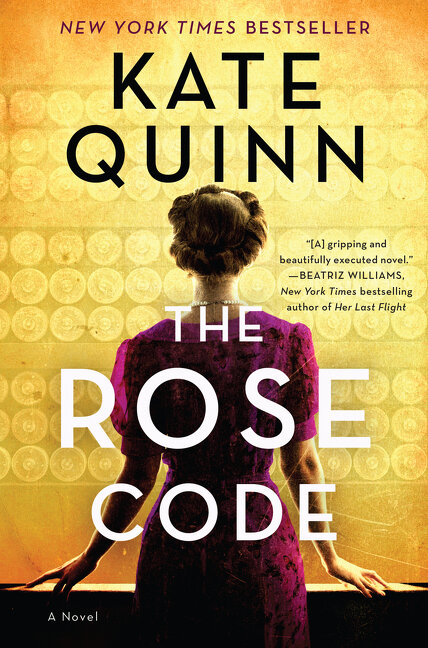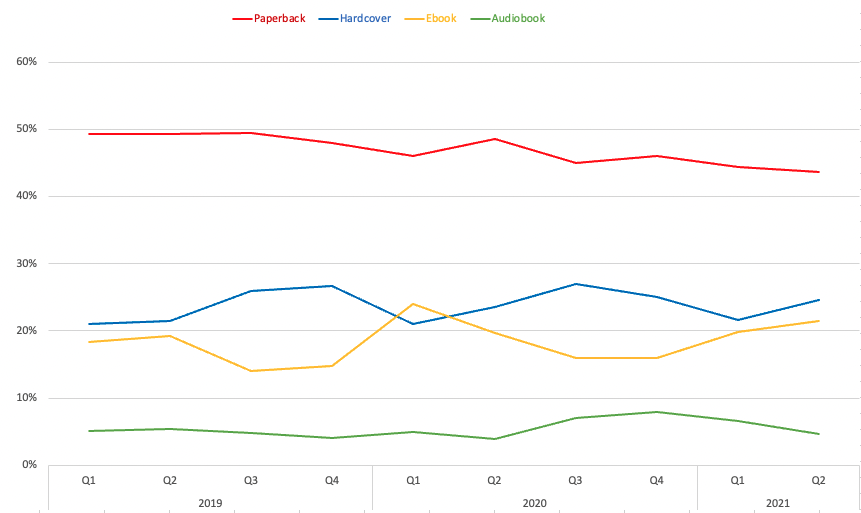Combining data from BNC SalesData, BNC BiblioShare and our Canadian Book Consumer survey, let’s look at how the English-language book market performed in the first half of 2021.
Book sales
Print sales for the first six months of 2021 vs. the first six months of 2020 show a significant increase of approximately 1.5 million units and 47 million dollars year-over-year.
Comparing the first six months of 2021 with the first six months of 2019 show that the book market in Canada is still running behind 2019, but has gained back much of the COVID-19 related losses that happened at the start of 2020.
| Year | Units | Dollars |
|---|---|---|
| 2021 | 22,502,564 | $463,780,134 |
| 2020 | 20,919,449 | $416,877,764 |
| 2019 | 23,533,549 | $479,778,810 |
The bestselling print books in the Canadian market during the first six months of 2021 were:
In the Fiction category: The Rose Code by Kate Quinn
In the Juvenile & Young Adult category and overall: Dog Man: Mothering Heights by Dav Pilkey
In the Non-Fiction category: Atomic Habits by James Clear
The top-selling Canadian title: The Push by Ashley Audrain 🍁
On the graph below you can see the changes in unit sales by month for the overall physical English-language book market in Canada for the first half of 2021. Retailers across Canada were able to begin opening in late spring and/or early summer and as a result sales in March and April 2021 were well ahead of those in 2020 and 2019.
Monthly unit sales, Jan. - July
Looking at the category trends for the first half of 2021:
The Juvenile/Young Adult category continues to dominate, accounting for 42% of all print book sales in the Canadian English-language trade market, up from its 41% share for the same period in 2020.
Non-Fiction follows with 30%, down slightly from 32% in 2020.
Fiction brings up the rear at 27%, up from 26% in 2020.
The subjects/genres with the largest increases year over year are: Comics & Graphic Novels (up 92%, with the Manga category seeing significant increases of 145%), Poetry (up 81%) , Psychology (up 84%), and Young Adult/Fantasy (up 129%).
Frontlist (those titles with a publication date within the year) sales accounted for 27% of the market in 2021, up from 23% in 2020.
Publication dates
Using data gathered from publisher-supplied bibliographic metadata data to BNC BiblioShare, we looked at publishers' publishing schedules and how they have been affected by the pandemic.
Analyzing publication dates by month for 2021 print book releases in Canada, the data shows a decrease in the number of new print books entering the market — continuing a trend that began with the onset of the pandemic in 2020. It appears that the continued nature of the retail, and publishing, landscapes continues to have an impact on publishing schedules.
Publication dates by month Jan. to Dec.
Canadian Book Consumer Survey
The information below is a sneak peek at the results of the Canadian Book Consumer Survey, a quarterly survey conducted by BookNet Canada querying Canadian readers about their book purchasing behaviour, fielded primarily in May and July 2021 to approximately 2,500 English-speaking Canadians.
Purchases by book format 2019-2021
As the graph below shows, there was a significant change in book consumers shopping habits at the start of 2020. As the COVID-19 related lockdowns took effect in spring 2020, consumers shifted their book purchasing to online channels. As lockdowns ended, or were lessened, across Canada in spring 2021, retailers began to open for browsing and purchasing, and as a result there was a corresponding increase in 'in-person' purchasing.
Keep an eye on this blog for more information on consumer and reader behaviour in Canada. Complete information on print book sales broken out by category and by Canadian-owned firms for 2020 can be found in our annual publication The Canadian Book Market 2020.
New research on sales trends, format breakdowns, reading behaviour, and more can be found at booknetcanada.ca/research. Interested in getting communications from us exclusively about research? Subscribe to the monthly BNC Research newsletter. To stay up-to-date on all BookNet Canada news and information, subscribe to our weekly eNews.






















Insights into the latest updates and additions made to ONIX codelists.